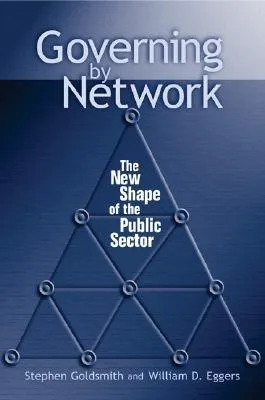Governing by Network: The New Shape of the Public Sector

Navigating the Web: Exploring "Governing by Network" by William D. Eggers and Stephen Goldsmith
A Digital Frontier in Governance
Embarking on the pages of "Governing by Network: The New Shape of the Public Sector" by William D. Eggers and Stephen Goldsmith feels like setting foot in a digital frontier where traditional boundaries of governance are redefined. Join me as we navigate the intricate web woven by these authors, exploring the transformation of the public sector.
The Landscape of Connectivity
As I delved into the book, the authors painted a vivid picture of a governance landscape transformed by the digital age. They introduced the concept of governing by network, a paradigm where connectivity and collaboration take center stage. It was a departure from the hierarchical models I was accustomed to, and the possibilities seemed both promising and challenging.
Embracing the Networked Future
Breaking Down Silos
One key theme that resonated was the breaking down of silos within the public sector. Eggers and Goldsmith argue that traditional bureaucratic structures hinder efficiency, and the solution lies in interconnected networks. This reminded me of an experience from my own professional life where departmental silos stifled creativity and collaboration. The need for a more networked approach became glaringly evident.
Personal Anecdote: Breaking Free from Silos
Reflecting on a project that required cross-departmental collaboration, I recalled the challenges of breaking free from silos. The success of the endeavor came not from isolated efforts but from fostering a networked environment where information flowed seamlessly between teams. The real-world implications of the authors' insights became clearer.
The Power of Collaborative Governance
Leveraging Collective Intelligence
One striking aspect of the authors' argument is the power of collective intelligence. By tapping into the knowledge and expertise distributed across a network, governance becomes more agile and responsive. It was akin to crowdsourcing solutions to complex problems, a notion that resonated with the spirit of the digital age.
Personal Reflection: Harnessing Collective Wisdom
Contemplating the idea of collective intelligence, I thought about instances where tapping into the collective wisdom of a diverse group led to innovative solutions. It was a reminder that the most effective answers often emerge from the collaboration of minds with varied perspectives, echoing the essence of governing by network.
Adapting to the Digital Ecosystem
Embracing Technological Advancements
Eggers and Goldsmith emphasize the role of technology as an enabler of networked governance. The digital ecosystem, with its vast array of tools and platforms, becomes the medium through which government entities connect, communicate, and collaborate. It's a shift from bureaucratic paperwork to a dynamic, tech-driven environment.
Personal Anecdote: Embracing Digital Transformation
Recalling a phase in my career when my team embraced digital tools for project management, I witnessed firsthand the transformative power of technology. The efficiency gains were substantial, and the ease of collaboration across geographies mirrored the principles outlined in "Governing by Network." The authors' advocacy for technological adaptation resonated with my experiences.
Addressing Challenges in Networked Governance
Navigating Complexity
While the authors champion the benefits of networked governance, they don't shy away from addressing the inherent challenges. The complexity of managing interconnected networks requires adept navigation. It brought to mind the intricacies of maintaining balance and coordination in a world where dependencies are intertwined.
Personal Reflection: Navigating Complexity
Reflecting on situations where navigating complexity was a learning curve, I appreciated the authors' candid acknowledgment of the challenges. It highlighted the importance of developing a skill set that embraces adaptability and strategic thinking in the face of intricate networks.
Shaping the Future of Governance
A Call to Action
As I neared the end of "Governing by Network," the authors issued a compelling call to action. The book is not just an exploration of a new paradigm; it's an invitation for policymakers, public servants, and citizens to actively participate in shaping the future of governance. It sparked a sense of responsibility and agency.
Personal Anecdote: A Personal Call to Action
Recalling moments when I felt a personal call to action, I recognized the profound impact that individuals can have in shaping the systems they are part of. "Governing by Network" served as a catalyst for introspection—how can each of us contribute to the evolution of governance in an interconnected world?
Closing the Digital Chapter, Opening Conversations
As I closed the digital chapter of "Governing by Network," I felt a sense of optimism for the future of governance. Eggers and Goldsmith had illuminated a path where connectivity, collaboration, and adaptability reign supreme. The book wasn't just a narrative; it was an invitation to engage in conversations about the role each of us plays in this networked landscape.